What’s new?
Along with the Silverlight 2 Beta 2 a new version of the DeepZoom Composer was also released. After taking a look at it, I thought that it might be useful to make a list with the changes and the new features I found in it.
- Output format changed to XML file
- Image tags can now be added in the Compose section
- Alignment to Grid and guidelines added to the Compose section
- Export section enhancements (image formats, Silverlight project output)
Note! I assume that you already know what the DeepZoom Composer is and how to use it. If not please take a look at this article first and then go back to see what are the changes in this version.
Mechanics
The first thing you probably should know about the new DeepZoom Composer is that the output format is changed. Instead of binary file the output is an XML file. The maximum tile size is changed from 512x512 pixels to 256x256 pixels.
Compose
A new panel is added under the imported images list. It contains information about the selected image – size, path and tag. Tag is used to provide additional information for the image and is used only along with the SubImages collection in the MultiscaleImage control. The tags are saved together with the other image information in an XML file, which can later be parsed using Silverlight and LINQ.
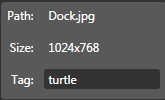
After I played a while with the composer I found that when you drag an image into the scene and try to align it with another image on the scene a guideline appears like in the example:
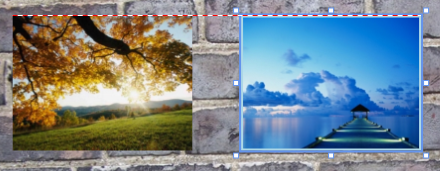
There is also a possibility to arrange the composed images into a grid. This option can be found in the context menu.
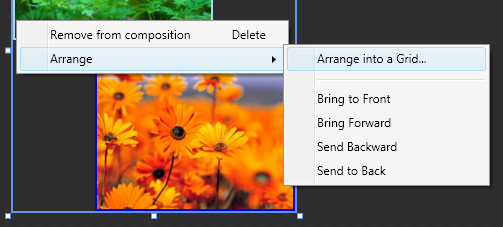
Then you will be able to constrain the grid by columns or rows, set their number and the padding between the images.
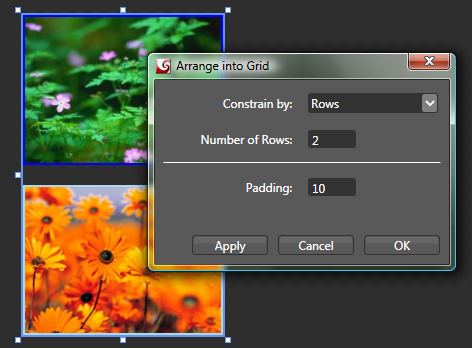
Looking at this options you can guess that the Grid can only contains rows or columns, although it’s possible to have more than one image in a row. For example if we have 4 images, Constrain by rows and 2 rows the result is the following:
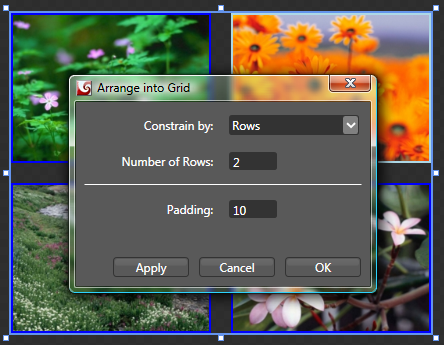
Something interesting here: A Grid, constrained by columns, with n pictures and one column is the same as a Grid, constrained by Rows, with n pictures and n rows.
Export
In the export section there are pretty good changes. First you can choose between Composition and Collection. You can also choose the image format (PNG or JPEG) for the exported images. Selecting a JPEG allows you to set the quality of the images. And last but not least is the thing I find very useful – the output types. The first option is “Export Images”. That’s clearly the export behavior of the old DeepZoom Composer. The new thing here is the “Export Images and Silverlight Project” option. If selected, the DeepZoom Composer not only exports the composition, but creates a Silverlight project, that contains a MultiscaleImage control with complete zoom and pan functionality. The control’s source is the freshly created composition, so you can immediately take a look at your creation.

If you are interested how to use the MultiscaleImage control with the outputted files or how to implement such functionality to it, take a look at this article.
Summary
These are most of the changes I have noticed in the new DeepZoom Composer. They really improve the composer and I find them really useful. If you happen to find something else, please, feel free to post it as a comment.